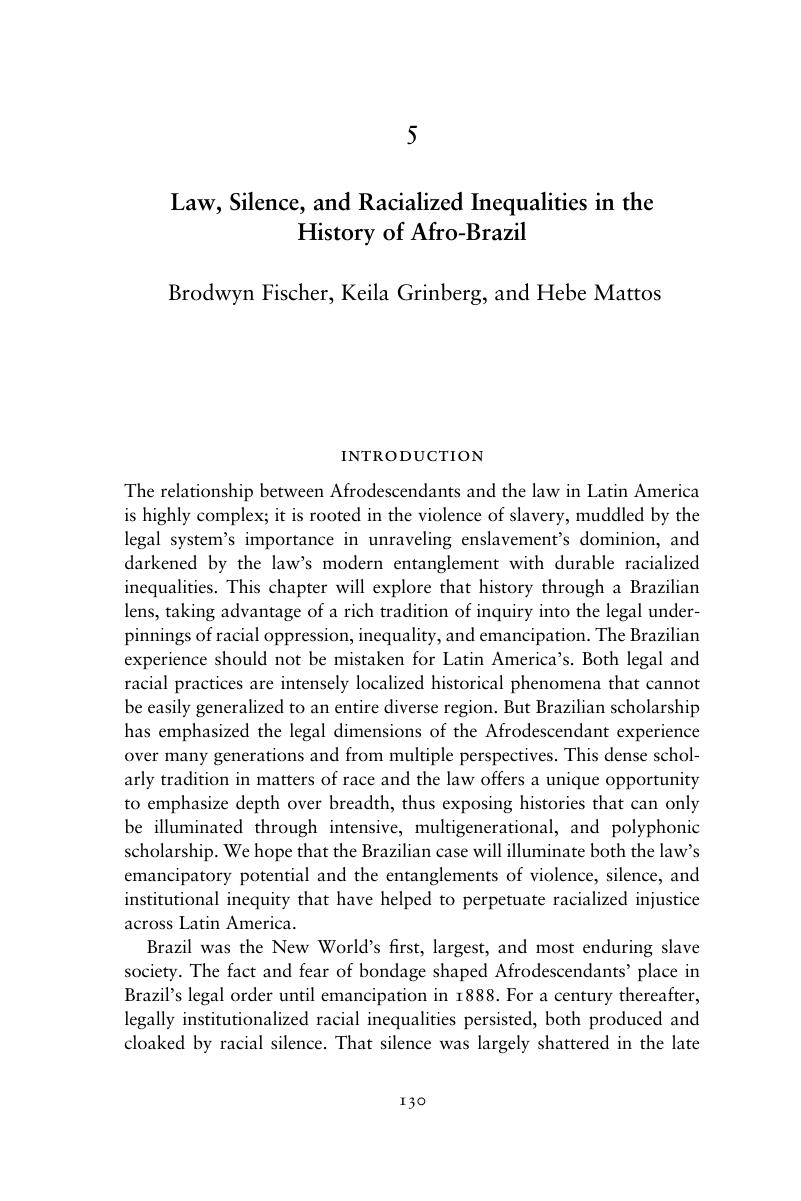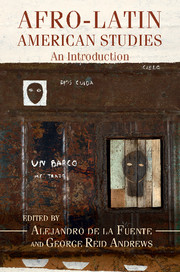Book contents
- Afro-Latin American Studies
- Afro-Latin America
- Afro-Latin American Studies
- Copyright page
- Contents
- Figures
- Tables
- Contributors
- Acknowledgments
- 1 The Making of a Field
- Part I Inequalities
- 2 The Slave Trade to Latin America
- 3 Inequality
- 4 Afro-Indigenous Interactions, Relations, and Comparisons
- 5 Law, Silence, and Racialized Inequalities in the History of Afro-Brazil
- Part II Politics
- Part III Culture
- Part IV Transnational Spaces
- Index
- References
5 - Law, Silence, and Racialized Inequalities in the History of Afro-Brazil
from Part I - Inequalities
Published online by Cambridge University Press: 24 April 2018
- Afro-Latin American Studies
- Afro-Latin America
- Afro-Latin American Studies
- Copyright page
- Contents
- Figures
- Tables
- Contributors
- Acknowledgments
- 1 The Making of a Field
- Part I Inequalities
- 2 The Slave Trade to Latin America
- 3 Inequality
- 4 Afro-Indigenous Interactions, Relations, and Comparisons
- 5 Law, Silence, and Racialized Inequalities in the History of Afro-Brazil
- Part II Politics
- Part III Culture
- Part IV Transnational Spaces
- Index
- References
Summary

- Type
- Chapter
- Information
- Afro-Latin American StudiesAn Introduction, pp. 130 - 176Publisher: Cambridge University PressPrint publication year: 2018
References
- 4
- Cited by



